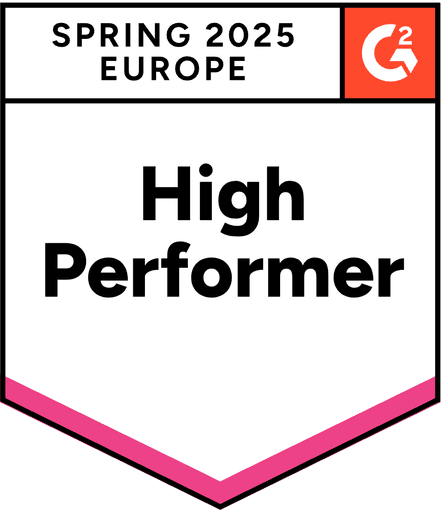Team prioritization
Collaborative prioritization provides additional context, reduces bias in decision-making, aligns your team, finds better solutions, saves time, clarifies the full picture, and reduces team stress. Involve your team in the prioritization process can lead to greater productivity, work satisfaction, and ROI.
No matter how big your team is, collaborative prioritization is essential because it serves multiple goals:
Provides additional context for each task.
Reduces Bias in Decision-Making.
Aligns your team (Highlights team’s misunderstandings).
Finds better solutions and missed inputs.
Save 95% of the time on discussions.
Clarifies the full picture.
Increase team productivity by up to 200% and reduce team stress.
Why Prioritization with Your Team Is Essential
Wearing my customer success manager hat at Ducalis.io, I gained a unique experience of learning from hundreds of real-world examples of how companies fight the struggle with "zoom fatigue" caused by endless "priorities sync meetings" and constantly changing priorities.
The solution? Involve the whole team in the prioritization process.
While some managers may still think this is a waste of time, I believe it results from the HIPPO effect. The benefits of saving 95% of discussion time and improving team productivity by up to 200% are well worth it.
(Note: These numbers are based on our internal data for Ducalis customers' workflow improvements over at least six months of using Ducalis.io for an average team of 50 users).
The Priority Elephant in the Room
There is an old saying about blind people touching an elephant:

A group of blind men heard that a strange animal, called an elephant, had been brought to town. However, none of them were aware of its shape or form. Out of curiosity, they decided to inspect and know it by touch, which they were capable of.
So, they sought it out, and when they found it, they each groped about it.
The first person, whose hand landed on the trunk, said, "This being is like a thick snake." Another, whose hand reached its ear, thought it seemed like a fan.
A person whose hand was upon its leg said the elephant is a pillar like a tree trunk.
The blind man who placed his hand upon its side said the elephant "is a wall."
Another who felt its tail described it as a rope.
The last felt its tusk, stating the elephant is "that which is hard, smooth, and like a spear."
The story's message is that conflicts often arise due to people having different perspectives, with each party being confident in their judgment.
Thinking about your team’s priorities is the same as touching an elephant and igniting conflicts (different opinions) about the next most important thing we have to do.
When prioritizing, it's important to consider adjacent inputs such as front-end and back-end development, design effort, customer needs, marketing metrics, and product usage metrics. It cannot be easy to view all of these factors simultaneously.
🧠 Prioritization is a team sport. Don't think of it as avoiding making decisions. Instead, it's about gathering more context and perspectives you can't handle alone.
Benefit 1: Provides additional context for each task
Prioritization involves predicting the future by evaluating your efforts and values. It's essentially a bet on the successful next step for your product. It would be best if you relied on better inputs to increase your chances of success.
In other words, improve your prioritization criteria. Prioritization isn't just for product managers and developers. You can get input from other teams as well. Here are some ideas for who you can invite to help with prioritization:
Sales can evaluate sales enablement features. For example, the lack of SSO may block enterprise deals so that they can set their criteria for the maximum value.
Support teams can share their opinion on what customers demand most at the helpdesk.
Marketers can evaluate search demand for upcoming features.
Separate criteria can be created for back-end and front-end developers to evaluate the effort required for each task separately.
One common missed opportunity in prioritization is narrowing down the team responsible for it.
Involving a cross-functional team in the product thinking and development process is valuable for uniting team members around their goals. Creating a prioritization routine allows each team member to focus on the main goal through each backlog item.
Ducalis offers a customizable prioritization framework that allows you to create specific criteria for each team member's role to evaluate from their perspective.

Benefit 2: Reduces Bias in Decision-Making
Collaborative prioritization offers several benefits, one of which is reducing bias in decision-making.
First, it clarifies the full picture by considering inputs from different team members, such as sales, support, and marketing. This helps ensure that all relevant factors are considered when evaluating the backlog.
Second, it reduces bias by allowing multiple perspectives and opinions to be heard. This lowers the risk of individual tendencies influencing the prioritization process.
Lastly, collaborative prioritization aligns your team by ensuring everyone is on the same page. Different team members may have different estimations for certain tasks, and prioritization provides an opportunity to discuss these differences and develop a shared understanding.

Benefit 3: Aligns your team (Highlights team’s misunderstandings)
Imagine you are considering a task from your backlog as very difficult, while your teammate thinks it's easy. There are no right or wrong answers in prioritization, only different points of view. It's a great opportunity to discuss the task for better team alignment if you have different estimations. Perhaps someone knows a better solution or is missing important information about the task.
💡 Misaligned people misalign people.
It's easy to lose track of alignment. Be alert for it early on.
The Team Alignment report shows a heatmap of your team's misalignment evaluations.
This report saves 95% of the team's time on plan discussions.
Benefit 4: Finds better solutions and missed inputs
When different estimates are assigned to the same task, it can be a good opportunity to discuss and share different opinions on estimation and prioritization. It's important to understand that this process has no right or wrong answers.
Someone on the team may have knowledge or information that others don't, which could lead to identifying a better solution or uncovering previously unknown metrics.

Benefit 5: Save 95% of the time on discussions
However, spotting all misalignments in your team requires discussing each solution in each backlog item with every teammate, which could take an infinite amount of time. Fortunately, with Ducalis, you can easily address differences using the team alignment report.
There are just six connections for a team of four people to consider. For six people, there are 15 connections. For 50 people, there are 1,225 connections. Collaborative prioritization, evaluation poker, and the team alignment report can help your team save about 95% of the time spent on backlog discussions.


Benefit 6: Clarifies the full picture and keeps everybody on the same page
Creating a routine for considering the entire backlog through the lens of your criteria helps each teammate understand your ideas, what works, and what doesn't work. Without this exercise, you risk only addressing the latest issues. Backlog refinement for the whole team increases awareness of the most important aspects of your product.
Benefit 7: Reduces team’s stress
Engaging teammates in decision-making leads to a more personal connection with the product and offers several bonuses, including:
less stress due to fewer changing priorities
transparent rules for influencing the backlog
more suggestions for future ideas
greater work satisfaction
increased productivity
Do not hesitate to involve your team in collaborative prioritization (backlog refinement). In the end, it leads to great ROI.



















